#Quinoa history
Explore tagged Tumblr posts
Text
Quinoa; It's Beautiful Story and Tragic History

Quinoa is one of those foods that has made it's way into modern food trends. It seems to have exploded out of nowhere. It fits many diets as it's low carbs, vegan, gluten free, and a complete protein. Is this superfood newly engineered by scientists? Nope. It's actually one of the oldest staple foods of the Americas. So why isn't Quinoa as common as Potatoes and Tomatoes?
If you've never had Quinoa, it's a seed that is eaten like a grain. It's small and round, coming in a variety of colours. Tan, Red, and Black are most common. It can be ground into a flour, but it's most commonly eaten by boiling like rice. It tastes like a slightly nutty rice and I quite enjoy it. That's assuming you get the coating off.
Since I live in Canada, most Quinoa that's bought comes prewashed. This is because Quinoa has a protective coating over it to help keep pests away. This invisible coating is very bitter and soapy, thus it needs to be washed off. But this coating is one of the things that makes Quinoa so resilient. It can grow basically anywhere. Flat lands, highlands, mountains, dry lands; it's absolutely astounding how a crop this nutrient dense can grow so easily.
And the Indigenous populations of the central Americas knew this. Quinoa was the backbone of their diet. It allowed their people to thrive, their children to grow up strong, new mothers to lactate and provide milk for their young; It was a gift from the Gods. They worshiped Quinoa and regularly laid out offerings to the beings who gave it to them.
So when European colonizers first came to the Americas, they saw how important Quinoa was to the Inca locals. And they didn't like that. Some of them didn't like the religious aspect, and thought it inappropriate they were worshiping false Gods. Others saw how healthy and strong the food made them and felt threatened. So the colonizers set out to destroy Quinoa and the culture around it. They tore up fields, destroyed offerings, and placed a Ban on Quinoa eating and worshiping. It's pretty pathetic how threatened someone can feel from food, but sadly it worked. And it wasn't just Quinoa, they abolished cultures, other foods they didn't like; we are missing so much and it physically hurts me to think about.
But, we have Quinoa today. This is because Quinoa can grow anywhere so some natives took some seeds and climbed high up into the mountains. They cultivated the quinoa there and it was eaten mainly by locals. Until the 1970s when some American students of a Bolivian Mystic and Philosopher brought the grains back to the US after eating the food on the regular. A while after, it took off in popularity.
Kitchen Uses
As mentioned, Quinoa is a good substitution for rice. I actually just cook mine in a rice cooker. You always want to cook Quinoa at a 1 to 2 parts ratio. 1 part dry Quinoa to 2 parts Water (Or other liquid). You can eat it hot or let it cool and use it as a base for a salad. Try mixing it with some diced cucumbers, tomatoes, green onions, mint, parsley, feta cheese, and a little olive oil and lemon juice. Add salt and pepper to taste, easy fresh salad.
I love using Quinoa in cooking and Kitchen Magic. It has the Nick name Mother Grain and it's just so nourishing. Quinoa is great at Absorbing Negativity and Promoting Health. Since it can grow in almost any kind of environment, this promotes Adaptability, Overcoming Obstacles, and Growth. It's also known for it Abundance, Spirituality, and Fertility properties. But don't forget, it's also a seed, so New Ideas and New Beginnings. You take advantage of colour magic and black Quinoa, so not only will it Absorb the Negativity, but Also Ward and Banish.
Mythology
Finding an actual story about Quinoa has been tricky. I have found many shortened summaries of mythology and stories, but not a beat for beat retelling. Which I feel is important. But I found a video of an Andean man telling the story of how we first got Quinoa. I encourage you to watch the Video, but I'm also going to write the story down in case the Video is taken down one day. I've added in some of my own words based on the visuals used.
Tradition has it that the Aymara people used to talk to the stars. Since that time, it has been told that nearby Titicaca Lake and it's fields started producing their first crops. However, in the night, someone would come to the fields and rip up the potato plants growing there.
There was a young man who guarded the fields by the Lake. One night he wanted to surprise the potato thief. So he brought a loud hand bell with him, and stayed up through the night watching the potato fields.
It was here that several young women showed up in the fields. The young man heard someone digging up potatoes so he went to investigate. The young man stayed hidden and pushed back the tall crops to see three young women gathering potatoes.
The young man stood high and rang the warning bell. Startled, the women fled; however, one of them tripped and fell, and he captured her. It was a cold night, so the young man offered some clothes off his back to keep her warm while they waited. She smiled at him for his kind gesture.
The bell had awoken the villagers and they were on their way to get the potato thief. They sounded angry and ready to take out their rage on the potato thief. The young man grew concerned for the women, but she simply handed him back his garment.
And so it was that the young woman turned herself into a bird and flew away to where her companions, the other stars, lived. The young man was flabbergasted and couldn't explain to the other people what had happened.
The next day, he went in search of the Condor [A type of Vulture] so that it could carry him to the stars that had taken flight off the Earth. He had to climb high, high up a cliffside mountain to get to the Condor. But once there the Condor stretched his wings and became large enough to ride.
The Condor bore him to where the young star was. High up to a beautiful land covered in golden crops called Quinoa. The young man reunited with the woman star and they enjoyed each other's company, running through the fields of Quinoa.
She lived with the young man and fed him Quinoa. Yet there came a day when the young man wanted to return to the Earth to see his Parents. So he got on the Condor to fly back home. Before leaving, the star gave him Quinoa to take back to his people. Then the Condor flew off.
As the young man came back to earth on the Condor, he scattered the Quinoa as he went. The seeds planted themselves into the soil and grew into new Quinoa plants on Earth.
From then on, Quinoa has been grown in order to feed the Andean people. Yet it was unheard of by the rest of humanity. Quinoa is life. Quinoa is hope. Quinoa is the past. Quinoa is the present. And Quinoa is the future of mankind.
#food and folklore#kitchen witch#klickwitch#folktale#fairytale#folklore#Quinoa#Quinoa history#Inca#mythology#Peru#Kitchen Magic#pagan#Quinoa meaning#Quinoa origins
4 notes
·
View notes
Text

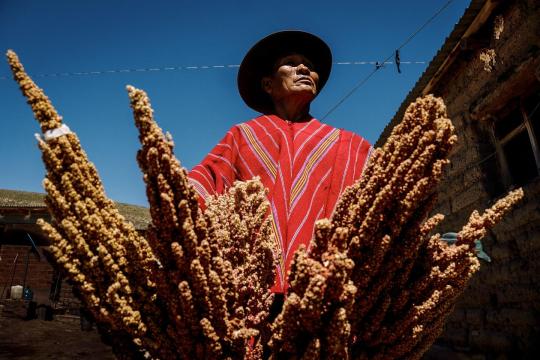
L’agriculture du Quinoa remonte à au moins dans une période datant de 7’000 à 6’000 ans avec sa domestication par une population vivant dans les alentours du lac Titicaca entre le Pérou et la Bolivie. Toutefois, le Quinoa est lui consommé depuis plus longtemps par un peuple local de chasseur-cueilleur durant l’époque Archaïque vivant au Pérou, en Argentine et au Chili. On peut retrouver des restes archéologiques qui ont été dans une première analyse datée de 5 000 ans avant Jésus-Christ à Ayapucho au Pérou, toutefois des analyses postérieures ont rectifié cela pour des dates plus tardives. Au Chili, ce sont des graines datées de 3000 avant Jésus-Christ qui ont été trouvées à Chinchorro au Chili. Ainsi, depuis plusieurs millénaires, le quinoa est cultivé dans la cordillère des Andes malgré les conditions climatiques très difficiles. Constituant avec la pomme de terre et le maïs, une part très importante de l’alimentation des communautés andines. C’est suite à la colonisation espagnole des Andes que le Quinoa fut rejeté et méprisé à cause de sa vision d’une “nourriture indienne” et ainsi, tout le savoir accumulé sur sa culture et sa consommation par des populations autochtones andines faillit être perdu à jamais. Ce n’est que lors des années 1970 que les consommateurs du Nord se sont intéressés au Quinoa et que les communautés andines, plus spécifiquement en Bolivie ont su profiter de cette demande pour se lancer dans une grande culture d’exportation. A cette même époque, des essais de cultures à grande échelle sont initié en Amérique du Nord et en Europe tout en suivant des modèles de cultures conventionnels avec le recours d’engrais chimiques et de pesticides. La FAO (Organisation des Nations unies pour l'alimentation et l'agriculture) encourage aussi la conquête des milieux arides au Moyen-Orient, en Afrique et en Asie pour la culture du Quinoa.
Depuis 2009 cette culture à été introduite en France et à grande échelle. Cette culture se situe de l’Anjou jusqu’au Poitou et même en Corrèze. Jason Abbott, ingénieur agronome américain sera le pionnier de cette culture. Poussé par l'intolérance au gluten de sa fille, il met au point la culture dans les pays du nord. En France, la production passera de 100 à 200 hectares entre 2009 et 2010 à 1 500 ha en 2015 et deux cent cinquante agriculteurs s'engagent dans cette toute première et unique filière de culture de la graine andine pour une production de 2 0000 tonnes par an. Bien supérieur au Quinoa andins, le Quinoa Français intéresse toutefois des consommateurs qui privilégient l’agriculture de proximité, donnant ainsi un débouché commercial en France. Une demande croissante du produit poussera les agriculteurs boliviens à prendre des initiatives en vue d’intensifier la production, développant les superficies au dépens d’activités comme l’élevage traditionnel du lama qui est élevé non seulement pour sa viande et sa laine, mais aussi le fumier qui sert à fertiliser les sols ou au dépens de cultures vivrières lorsque le climat le permet. Les conséquences de cela sont à la fois environnementaux avec l’appauvrissement du sol avec la réductions des jachères ou la mécanisation par la charrue à disques, mais aussi d'importantes répercussions sociales. Cette tendance freine, voire inverse partiellement l’exode rural, les revenus qui sont apportés par la culture entraîne de nombreuses tensions au sujet des terres au sein des communautés villageoises.
0 notes
Text
Discover Bolivia: Your Ultimate Travel Guide
A Glimpse into Bolivia’s Rich History Bolivia, a landlocked country in South America, boasts a diverse and rich history. It was originally inhabited by ancient civilizations, including the Tiwanaku and the Inca Empire. Spanish conquistadors arrived in the 16th century, leading to centuries of colonial rule. Bolivia gained independence in 1825 but has since experienced a turbulent political…
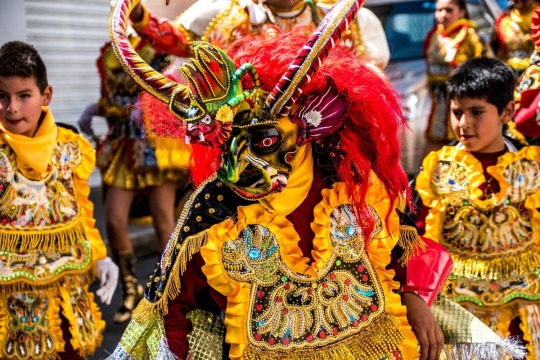
View On WordPress
#a landlocked country in South America#adventure#africa#and activities#and local markets. Adventure Sports: Mountain biking on the infamous Death Road. Wildlife Watching: Spot exotic animals in the Amazon Basin.#and quinoa. Popular dishes include salteñas (empanadas)#and respect local customs. Accommodation Affordability Bolivia offers a range of accommodation options#and sopa de maní (peanut soup). Cultural events and festivals#and sopa de maní for a taste of traditional Bolivian cuisine. 7. Can I use credit cards in Bolivia? Credit cards are widely accepted in majo#and taxis or ride-sharing services are available in cities. Religion Catholicism is the predominant religion#anticuchos#anticuchos (grilled meat skewers)#are also widely spoken. Embark on your Bolivian adventure with this comprehensive guide and immerse yourself in the rich history#be cautious with your belongings#boasts a diverse and rich history. It was originally inhabited by ancient civilizations#but exercise usual precautions. Avoid walking alone at night#but Indigenous beliefs and practices are also widely observed#but it&039;s advisable to carry cash#but it&039;s best to check specific requirements beforehand. 2. What is the best time to visit Bolivia? The dry season from May to October#but many Indigenous languages#but requirements vary by nationality. US citizens#but take usual precautions against petty crime. Avoid demonstrations#carry cash for remote regions and small transactions. Top Places to Visit 1. Salar de Uyuni The world&039;s largest salt flat offers stunni#challenges like rural access and educational quality persist. Universities in major cities offer higher education opportunities. Visa and En#colonial cities#corn#creating a unique cultural blend. Food and Culture Bolivian cuisine is diverse#destinations#Discover Bolivia: Your Ultimate Travel Guide A Glimpse into Bolivia&039;s Rich History Bolivia#especially during the rainy season when it reflects the sky. 2. La Paz The administrative capital
1 note
·
View note
Text
#food#history#shhhhh don't let the western agri megacorps find out about it#or it'll become the next quinoa
0 notes
Text
Writing Reference: Food History
B.C.
10,000 - almonds, cherries, bread, flour, soup
8,000 - wheat ⚜ 7,000 - wine, beer, pistachios, pig, goat, sheep, lard
6,500 - cattle domestication, apples ⚜ 6,000 - tortilla, dates, maize
5,000 - honey, ginger, quinoa, avocados, potatoes, milk, yogurt
4,000 - focaccia, watermelons, grapes, pomegranates
3,200 - chicken domestication ⚜ 3,000 - butter, onion, garlic, apricots
2,737 - tea ⚜ 2,500 - olive oil, seaweed, duck ⚜ 2,300 - saffron
2,000 - peaches, liquorice, marshmallow, pasta, ham, sesame seeds
1,500 - chocolate, vanilla ⚜ 1,200 - sugar ⚜ 1,000 - mangoes, oats, pickles
900 - pears, tomatoes ⚜ 700 - cinnamon ⚜ 600 - bananas, poppy seeds
500 - artichokes ⚜ 400 - pastries, appetizers, vinegar
300 - parsley ⚜ 200 - turkeys, asparagus, rhubarb ⚜ 65 - quince
1st—13th Century
1st Century - chestnuts, lobster, crab, shrimp, truffles, blueberries, raspberries, capers, kale, blood (as food), fried chicken, foie gras, French toast, omelettes, rice pudding, flan, cheesecake, pears in syrup
3rd Century - lemons ⚜ 5th - pretzels ⚜ 6th - eggplant
7th Century - spinach, kimchi ⚜ 9th - coffee, nutmeg
10th Century - flower waters, Peking duck, shark's fin soup
11th Century - baklava, corned beef, cider, lychees, seitan
12th Century - breadfruit, artichokes, gooseberries
13th Century - ravioli, lasagne, mozzarella, pancakes, waffles, couscous
14th—19th Century
14th Century - kebabs, moon cakes, guacamole, pie, apple pie, crumpets, gingerbread
15th Century - coconuts, Japanese sushi and sashimi, pineapples, marmalade, risotto, marzipan, doughnuts, hot dogs
16th Century - pecans, cashews (in India), Japanese tempura, vanilla (in Europe), fruit leather, skim milk, sweetbreads, salsa, quiche, teriyaki chicken, English trifle, potato salad
17th Century - treacle, pralines, coffee cake, modern ice cream, maple sugar, rum, French onion soup, cream puffs, bagels, pumpkin pie, lemonade, croissants, lemon meringue pie
18th Century - root beer, tapioca, French fries, ketchup, casseroles, mayonnaise, eggnog, soda water, lollipops, sangria, muffins, crackers, chowder, croquettes, cupcakes, sandwiches, apple butter, souffle, deviled eggs
19th Century - toffee, butterscotch, cocoa, Turkish delight, iodized salt, vanilla extract, modern marshmallows, potato chips, fish and chips, breakfast cereal, Tabasco sauce, Kobe beef, margarine, unsalted butter, Graham crackers, fondant, passionfruit, saltwater taffy, milkshakes, pizza, peanut butter, tea bags, cotton candy, jelly beans, candy corn, elbow macaroni, fondue, wedding cake, canapes, gumbo, ginger ale, carrot cake, bouillabaisse, cobbler, peanut brittle, pesto, baked Alaska, iced tea, fruit salad, fudge, eggs Benedict, Waldorf salad
20th Century
1901 - peanut butter and jelly ⚜ 1904 - banana splits ⚜ 1905 - NY pizza
1906 - brownies, onion rings ⚜ 1907 - aioli
1908 - Steak Diane, buttercream frosting ⚜ 1909 - shrimp cocktail
1910 - Jell-O (America's most famous dessert)
1910s - orange juice ⚜ 1912 - Oreos, maraschino cherries, fortune cookies
1912 - Chicken a la King, Thousand Island dressing
1914 - Fettuccine Alfredo ⚜ 1915 - hush puppies
1917 - marshmallow fluff ⚜ 1921 - Wonder Bread, zucchini
1919 - chocolate truffles ⚜ 1922 - Vegemite, Girl Scout cookies
1923 - popsicles ⚜ 1924 - frozen foods, pineapple upside-down cake, Caesar salad, chocolate-covered potato chips
1927 - Kool-Aid, s'mores, mayonnaise cake ⚜ 1929 - Twizzlers
1930s - Pavlova cakes, Philly cheese steak, Pigs in blankets, margaritas, banana bread, Cajun fried turkey ⚜ 1931 - souffle, refrigerator pie
1933 - chocolate covered pretzels ⚜ 1936 - no-bake cookies
1937 - Reubens, chicken Kiev, SPAM, Krispy Kreme
1938 - chicken and waffles ⚜ 1939 - seedless watermelon
1941 - Rice Krispies treats, Monte Cristo sandwiches ⚜ 1943 - nachos
1946 - chicken burgers, tuna melts, Nutella ⚜ 1947- chiffon cake
1950s - chicken parm, Irish coffee, cappuccino, smoothies, frozen pizza, diet soda, TV Dinners, ranch dressing ⚜ 1951 - bananas foster
1953 - coronation chicken ⚜ 1956 - German chocolate cake, panini
1957 - Quebec Poutine ⚜ 1958 - Instant ramen noodles, crab rangoon, lemon bars ⚜ 1960s - beef Wellington, green eggs and ham, red velvet cake
1963 - black forest cake ⚜ 1964 - Belgian waffles, Pop Tarts, Buffalo wings, ants on a log, pita bread ⚜ 1965 - Gatorade, Slurpees
1966 - chocolate fondue ⚜ 1967 - high fructose corn syrup
1970s - California rolls, pasta primavera, tiramisu ⚜ 1971 - fajitas
1975 - hicken tikka masala ⚜ 1980 - turducken
1980s - Panko, portobello mushrooms, bubble tea, chicken nuggets, Sriracha, Red Bull energy drink, everything bagels
1990s - artisan breads, Jamaican jerk ⚜ 1991 - turkey bacon, chocolate molten lava cake, earthquake cake ⚜ 1993 - broccolini
1995 - Tofurkey ⚜ 1997 - grape tomatoes
21st Century
2002 - flat iron steak, tear-free onions ⚜ 2007 - Kool-Aid pickles, cake pops
2008 - Mexican funnel cake ⚜ 2013 - cronuts, test tube burgers
Source ⚜ Writing Notes & References ⚜ Writing Resources PDFs
#food#writing reference#writeblr#dark academia#spilled ink#literature#writers on tumblr#writing prompt#studyblr#poetry#poets on tumblr#light academia#writing inspiration#creative writing#writing inspo#food history#writing ideas#writing resources#history
435 notes
·
View notes
Text
Fish and Chips’ Surprising Jewish History. Jamie Oliver confirmed it!
You may be surprised to learn that fish and chips, though wildly popular in England for what seems like eternity, was actually a specialty of the Portuguese Sephardic Jews who fled the Inquisition in the 16th century and found refuge in the British Isles. Celebrity Chef Jamie Oliver referred to this recently in an article in the New York Times, adding that, “Dishes evolve, impacted by trade, war, famine and a hundred other forces.”

Among those “other forces” are dishes born of religious ritual. For observant Jews, fish is pareve, a neutral food in kosher terms, thus an easy way to avoid treyf (non-kosher food) and possibly include dairy in the same meal. It was especially important for Marranos, the so-called crypto-Jews, who pretended to be Christian during the Inquisition. They ate fish on Fridays, when meat was forbidden by the Church, and also saved some to eat cold the next day at lunch, to avoid cooking on Shabbat.
Frying was natural for Jewish home cooks — think of latkes and sufganyiot — and as the Jewish community began to flourish in England, it spurred a taste for its beloved fried, battered fish throughout the country. According to Claudia Roden’s The Book of Jewish Food, Thomas Jefferson tried some on a trip to London and noted that he ate “fish in the Jewish fashion” during his visit. Alexis Soyer, a French cook who became a celebrated chef in Victorian England included a recipe for “Fried Fish, Jewish Fashion” in the first edition of his cookbook A Shilling Cookery for the People (1845). Soyer’s recipe notes that the “Jewish manner” includes using oil rather than meat fat (presumably lard), which made the dish taste better, though also made it more expensive.
There’s some dispute about the where and when of “chips” (what we Americans call French fries and the French call pommes frites). Many historians say that deep-fried, cut-up potatoes were invented in Belgium and, in fact, substituted for the fish during hard times. The first time the word “chips” was used was in Charles Dickens’ A Tale of Two Cities in 1859: “husky chips of potato, fried with some reluctant drops of oil.”
The official pairing of fish and chips didn’t happen until a few years later, though. Although there are some who dispute it, most authorities say that it is thanks to a Jewish cook, this time a young Ashkenazi immigrant named Joseph Malin, who opened the first British chippy, AKA fish and chip shop, in London in 1863. The shop was so successful it remained in business until the 1970s.
Who could foresee that fearful Jewish immigrants hiding their true religion and practicing in secret would be responsible for creating one of the most iconic dishes in the U.K.? The down-home dish that Winston Churchill claimed help the British defeat the Nazis, the comfort food that George Orwell said helped keep the masses happy and “averted revolution.” The dish, by the way, that was among the only foods never rationed during wartime because the British government believed that preserving access to it was a way of keeping up morale. A dish that continues to be a mainstay of the British diet.
Think about that the next time you find yourself feasting on this centuries-old — Jewish? British? — recipe.
These days, some restaurants are putting a new spin on fish and chips. Almond crusted. Baked instead of fried. Quinoa coated. Sweet potato fries instead of regular. And those are all fine; as Oliver says, “Dishes evolve.” But plain old fish and chips endures and probably always will. Good recipes usually do.
H/T : @scartale-an-undertale-au
Naveed Anjum
#Jews#crypto jews#jewish cuisine#fish and chips#israel#secular-jew#jewish#judaism#israeli#jerusalem#diaspora#secular jew#secularjew#islam#global cuisine#global foods#cooking#home cooking#history of food#fish n chips#marrano#jamie oliver#chippy#England#London#Britain
311 notes
·
View notes
Text
what is with the health-food fixation on Ancient Grains? as far as I can tell, there's some notion that they're, like, Healthy and Rich in Nutrients and Exotic and Untainted by Mass Production. and that they're things like Farro and Quinoa and Bulgur and Amaranth and Millet and Sorghum.
one Healthline article opens with
"Ancient grains tend to be less processed than modern grains, like corn and wheat. Because of this, ancient grains have more vitamin, mineral, and fiber content. Including ancient grains in your diet may come with health benefits."
Its 12 "ancient grains" are amaranth, millet, kamut, sorghum, teff, freekeh, farro, barley, quinoa, bulgur, rye, and fonio.
But like. Freekeh, farro, bulgur, and kamut are wheat. They are wheat!!
Corn was domesticated around 9,000 years ago! it's ancient! Rice sometime around 10,000 years ago! Wheat maybe 11,000 or more! Quinoa is a few thousand years old, amaranth maybe 5,000, barley around 11,000, teff maybe 6,000. They're all old enough to have long histories of domestication and cultivation, but corn and wheat and rice are decidedly ancient.
And decidedly nutritious! people have been cooking with them for millennia because they're good! they vary in how much of any given nutrient they provide - rice and amaranth have less than wheat and quinoa, say - but like. specifically on that last one. quinoa is marketed as this high protein grain that vegetarians and vegans should fall all over themselves for but cooked wheat grains (farro bulgur etc) may actually have more protein than quinoa. and just normal-ass flour and bread and pasta! have protein! a fair amount!! cooked pasta has about as much protein as quinoa! not to say that the way grains or processed has no impact or that all grains have similar properties (they don't), just that "ancient grains" are not better across-the-board than their equally-ancient-but-not-marketed-thus counterparts
i mean first and foremost it's a marketing ploy, a health food scam, a way for companies to market their Virtuous Anciente Farro over our Modern Vulgar Wheat, whatever. but it's way less coherent than I realized - fully just an incorrect portrayal on all counts. And it's got a strong flavor of both an exoticizing racism and a... regular... racism beneath everything else, and that's all twisted on itself too...
note 1 that I am no expert on the history of grains + this all is my stream-of-consciousness wikipedia-ing reaction to initial dabbling in the history of said grains, not a well-backed or well-researched view
anyway I had ancient grains (regular-ass pasta) with ancient vegetables (tomatoes, peppers) and ancient legumes (beans) and an ancient drink (tea) for lunch and i feel pretty cool about the history of domesticated crops hbu
59 notes
·
View notes
Text
What Will Your Future Spouse's Favorite Cuisine Be? 😍🍝✨Korean BBQ ? 😱



I put a lot of effort into this reading, so please show some love by leaving comments, likes, reblogs, and follow me! ❤️💬✨
Paid psychic reading (7 questions for just $7) is available here:
Pile 1: The Lovers 💕 The Hierophant 📜 The Star 🌟

The Lovers card represents a deep connection between two people, often reflecting shared tastes and preferences. This could indicate that your future spouse might have a taste for romantic or intimate dining experiences, possibly something classic and universally loved like Italian food 🍝🍷, such as a cozy pasta dish or a romantic candle-lit dinner. The Hierophant brings a sense of tradition and structure, pointing towards a cuisine that has cultural or family significance - perhaps a traditional, home-cooked meal that’s been passed down through generations 🏠🍲. Think of a dish like roast chicken, lasagna, or a hearty soup that has been made with love for generations. The Star card symbolizes hope, optimism, and a sense of wonder. It could represent a love for something a little more adventurous or exotic, possibly incorporating elements from different cultures or a desire to try new things 🌍🥘. This could manifest as a love for Mediterranean mezze platters, sushi, or even something like Moroccan couscous.
Together, these cards suggest a blend of tradition, romance, and a touch of adventure when it comes to your future spouse’s favorite cuisine. They might love meals that are both comforting and have a sense of connection to family, while also remaining open to new and exciting culinary experiences. 🍽️💖 Examples could include classic pasta dishes, warm comfort food like shepherd’s pie, or sushi rolls with a twist!
Pile 2: The Empress 👑 The Chariot 🏎️ The Moon 🌙

The Empress brings nurturing, abundance, and a deep connection to the earth, symbolizing a love for fresh, wholesome ingredients—maybe your future spouse will favor organic, farm-to-table, or homegrown food 🌱🥗. This could include fresh salads, fruit bowls, or dishes like avocado toast, grilled veggies, and quinoa bowls that focus on healthy, vibrant flavors. The Chariot is all about forward momentum and victory, indicating that your future spouse may have a strong preference for bold flavors and cuisine that packs a punch, perhaps something spicy or hearty like Mexican or Indian food 🌶️🌮. Think of burritos, tacos with spicy salsa, or a rich curry with all the complex spices and heat. The Moon suggests mystery and illusion, pointing to a love for cuisines that are exotic or have a sense of wonder, maybe dishes from faraway lands or something that feels a little more luxurious, like French pastries or sushi 🍣🥐. They could have a penchant for delicacies like escargot, foie gras, or sushi rolls with unique ingredients like truffle oil.
Together, these cards suggest that your future spouse’s favorite cuisine will likely be one that feels nurturing, bold, and full of mystery. They could be someone who enjoys indulging in hearty, flavorful meals while also appreciating the rich history behind exotic or comforting dishes. 🍲💫 Examples might be a classic French onion soup, flavorful chicken tikka masala, or a bowl of fresh organic fruit salad.
Pile 3: The Fool 🌞 Death 💀 The Hanged Man ⏳

The Fool is all about new beginnings and adventure, pointing to a future spouse who might love trying new cuisines and exploring different dining experiences. They could be open to anything and everything, perhaps favoring fusion cuisine or street food from different parts of the world 🌍🍴. Imagine them loving adventurous dishes like Korean BBQ, bao buns, or gourmet street tacos. Death signifies transformation and change, suggesting that your future spouse may have a preference for cuisines that evolve or change over time, possibly something that reflects different cultural influences or seasonal menus 🍂🍣. This could manifest in dishes that change with the seasons, like a fresh summer seafood platter or an autumnal pumpkin risotto. The Hanged Man represents pause and contemplation, indicating that your future spouse may appreciate a slower, more thoughtful approach to food, possibly enjoying meals that require patience to prepare, like slow-cooked dishes or carefully crafted tasting menus 🍛⏳. This could look like braised lamb shank, French slow-cooked beef bourguignon, or a delicate multi-course sushi meal.
Together, these cards suggest a future spouse who is adventurous when it comes to food, with a love for trying new, transformative cuisines. They might appreciate meals that are constantly evolving and could have a deep connection to the process of cooking and the story behind each dish. 🍖💫 Examples could be fusion sushi rolls, Korean BBQ with an array of sides, or an elaborate Italian pasta tasting.
Paid readings (7 questions for just $7) are also available for more in-depth insights and personal guidance! 🌟💫
#divination#psychic#tarot reading#free readings#pick a card#pick a pile#free tarot#daily tarot#tarot community#tarotblr#tarot cards#tarot#future spouse#astrology#spirituality#crystals#witchcraft#meditation#manifestation#witchblr#spiritualawakening#mysticism#numerology#occult#wicca#tarot deck#pac reading
42 notes
·
View notes
Text
Huaútli (Amaranth)


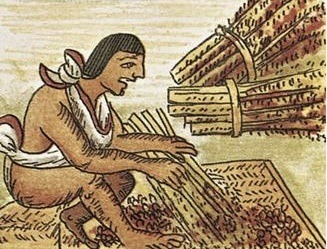

A native plant that popped up recently on the land I forage has a long history in North America. Evidence of not only foraged, but cultivated amaranth has been found in rock shelters in areas of the Ozarks where we hike.
Huaútli is the Aztec name of amaranth—a plant that was banned by the Spanish invaders. They called it an ungodly pagan food and said it was full of sin, punishments for growing it included severing of hands.
Catholic priests were horrified upon their arrival to find that amaranth was not only offered to deities, but considered a deity. It was rumored to be mixed with the blood of human sacrifice and then consumed—a little to close to the idea of the sacrament?
Whether or not it was banned as a part of the church’s war against paganism, there was a practical side to banning it. A near perfect staple food source, removing it from the conquered populace weakened them and their soldiers.
It was a tribute item demanded by the Aztecs, and central to the spiritual and ritual life of the indigenous civilization. It was valued as food and medicine, as well as a divine plant. Like quinoa, which was also banned, it was a near perfect food.
It may or may not have been mixed with human blood, but tzoali, popped amaranth blended with agave or honey, was offered to deities. In everyday usage it was ground into a flour masa and used in tortillas, tamales, and atole (a traditional hot beverage).
Tzoali is still made today but is called alegrías (happiness or joy).
#Huaútli#amaranth#foraging#ozark foothills#Aztec#native plants#history#sacred plants#food#cooking#recipes#Mexican food#indigenous food
25 notes
·
View notes
Text
Leeks, or prasa in Ladino, are one of the essential ingredients in Sephardic cuisine, playing flavorful parts in keftes (patties), meatballs, soups, salads and vegetable-egg dishes such frittatas and quajados. And leeks have a long history among Jews, dating back to Biblical times when the Israelites, wandering in the dessert and tired of eating manna, longed for the leeks, along with garlic and onions, that they ate in Egypt, which makes leeks a perfect symbolic food for the Passover seder.
For me, prasa kon tomat is one of the leek dishes always on my holiday table. I developed my written recipe for this dish, like so many recipes that have been passed from generation to generation of cooks, from the way I saw my cousin Dora, daughter of my grandfather’s brother and my father prepare it. Even though they each had learned from their mothers in different countries, Dora in Cuba and my father in New York, the look and taste of the dish was remarkably the same. The basis of Sephardic tomato-based dishes such as this is a sofrito, which cooks the tomato with olive oil and garlic to intensify the flavors. Prepare this adaptable dish in advance so the flavors can blend for a day or two, then serve it hot, cold or at room temperature. It’s perfect as part of a mezze (assortment of appetizers) or a side dish on its own or over rice, quinoa or pasta.
Notes:
The dish will keep 5-7 days refrigerated in a tightly covered container. It also freezes well. Defrost, reheating if desired, and serve.
To create a sweet and sour version, eliminate the garlic and add 1 Tbsp brown sugar with the lemon juice.
12 notes
·
View notes
Text
culture of HAIQIN | foods + cuisine
------------------------------------------------------------------------------
date: november 9, 2024
------------------------------------------------------------------------------
Cuisine
Staple Foods
Staple Foods:
Key staples include grains such as rice and millet, legumes, and a variety of vegetables and fruits. Seafood is particularly prominent in coastal provinces like Valero and Naidya, while the arid northern regions favor hearty dishes that incorporate drought-resistant crops.
The cuisine of Haiqin features a variety of staple foods, including grains like rice and barley, fresh vegetables, and a wide range of fruits. Commonly used spices and herbs add depth to the dishes, which often focus on fresh ingredients.
Common Ingredients:
Grains: Rice, millet, barley, couscous
Vegetables: Root vegetables like sweet potatoes, corn, turnips, and beets; leafy greens; tomatoes; chili peppers, lettuce
Fruits: Tropical fruits such as mango, papaya, and pineapple in coastal areas; apples and berries in cooler regions. tropical citrus, berries, apples, and melons
Proteins: Game meats (roasted, grilled), seafood, meats, legumes, and dairy products (especially in more temperate regions)
Herbs & Spices: Canyon herbs, cactus flower, cinnamon, citrus, cumin, coriander, and chili pepper
Dairy & Fermented Foods: Yogurt, pickled vegetables, and fermented fish are often paired with meals for added texture and taste.
Drought-Resistant Crops: In the northern arid regions, dishes often incorporate crops like quinoa, beans, and hardy grains that thrive in dry climates. Haiqin created drought resistance crops as well, in general, using technology
Regional Dishes
Stellis:
The fusion capital of Haiqin, Stellis is known for its vibrant, cosmopolitan food scene. The cuisine here mixes influences from global trends with traditional Haiqin ingredients. Spicy noodle dishes are a common staple, alongside seafood paella inspired by coastal influences. Street food culture is very prominent, with everything from dumplings to gourmet burgers offering a contemporary twist on local flavors.
Eldariaz:
Renowned for its royal traditions, Eldariaz specializes in rich, spice-laden dishes. Royal Spiced Lamb, a succulent dish flavored with local herbs and exotic spices, is a signature offering. The province also boasts an abundance of tropical fruits, which are often used in vibrant, refreshing salads and desserts. Eldariaz is a place where history and culinary heritage intertwine.
Nirin:
In Nirin, the cuisine is shaped by the challenging desert environment. Nirin Stew, a hearty, spiced meat and vegetable dish, is the region’s standout dish. Cactus salad, made from locally sourced desert plants, is a staple, while floral teas from the city of Waterlight are celebrated for their unique, refreshing qualities. The emphasis on grilled meats and spicy foods is a reflection of the region’s rugged spirit, with southern American-style dishes also being popular, like grilled game meats and cornbread. The food in Nirin mirrors the Southern American style, with grilled meats, spices, and robust flavors. I'm scripting I'm from here...(i can't live without some of the foods in my cr man I CAN'T)
Primos:
Known for its mountainous terrain, Primos offers meals designed for sustenance in the rugged landscape. Roasted game meats and vegetable stews are often prepared over open flames, drawing from the region's strong connection to nature. Hiking trails and outdoor activities are integral to Primos culture, with communal meals often enjoyed in nature during seasonal gatherings, such as mountain festivals.
Mian:
The cuisine of Mian, the capital province, is known for couscous and flatbreads, which are often served with pickled vegetables. The traditional Mian communal dining culture plays a central role in local cuisine, with dishes often shared in large gatherings that foster strong social bonds. Mian’s emphasis on communal eating creates a sense of togetherness, which is further reflected in the region’s culinary approach.
Valero:
The coastal province of Valero has a cuisine centered around seafood, particularly grilled fish and seafood paella, both of which showcase the bountiful offerings of the ocean. Festivals in Valero often feature communal feasts, where families and communities gather to celebrate the sea's abundance. Tropical fruits and citrus-based dishes also add a refreshing touch to the region's cuisine.
Naidya:
Known for its tropical climate, Naidya features cuisine that relies heavily on fresh seafood and tropical fruits. The islands host vibrant food festivals where local seafood dishes and traditional cooking methods are celebrated. Sustainability plays an important role in Naidya’s food practices, with an emphasis on using locally sourced ingredients and maintaining environmentally responsible food practices.
Agrios:
The industrial heartland of Haiqin, Agrios blends traditional food with industrial influences. Smoked meats and grain-based meals are common, reflecting the region's industrial past. Agrios is home to bustling local markets, where artisanal foods are sold, including smoked cheeses, cured meats, and hearty breads. The food here is practical and filling, mirroring the hardworking nature of the people.
Dridells:
In Dridells, food combines urban influences with traditional flavors. The cuisine features river fish and vegetable stews, with an emphasis on combining fresh, natural ingredients. Stews are often slow-cooked, allowing for deep, rich flavors. Dridells has a strong focus on urban sustainability, with eco-friendly food practices and a culture that supports organic farming and local produce.
Luminiaz:
The lush, fertile province of Luminiaz is known for its commitment to sustainability. The region’s cuisine features organic vegetables, local grains, and wild herbs that are hand-picked from the surrounding ecosystem. Luminiaz cuisine celebrates earth tones and nature-inspired dishes, often incorporating wild edible plants and herbs into both savory and sweet dishes. Sustainability is a central theme, and many of the dishes celebrate the biodiversity of the province’s environment.
Food Practices
Communal Eating:
One of the most cherished food traditions in Haiqin is communal eating. Whether during family gatherings, festivals, or celebrations, food is often shared. Large platters of dishes are served, and people sit together to enjoy the meal.
Festivals and Feast Days:
Certain festivals are closely linked to food practices, where traditional dishes are prepared and shared during celebrations. For example, harvest festivals often feature seasonal produce, and coastal feasts celebrate seafood, with people coming together to enjoy the best of what the region has to offer.
Religious and Spiritual Influence:
Although religious fasting is not widespread, certain communities in Haiqin observe dietary practices in honor of deities. Some regions may refrain from consuming specific foods, such as pork, in deference to sacred animals or local beliefs.
Street Food:
Especially in urban areas like Stellis, street food plays an integral role in Haiqin’s food culture, offering affordable and diverse options for the masses. Markets are vibrant and buzzing with vendors selling everything from dumplings to skewers.
#reality shifter#reality shifting#shiftblr#shifting community#shifting#shifting motivation#shifting reality#dr scrapbook#dr world#reyaint#anti shifters dni
11 notes
·
View notes
Text
I thought it might be fun to list "Best cultures for", imo, BTW, doesn't include SK in most cases.
So using my Anthro degree for something. This is Academic interest. I'm only giving the loose reasons why. I'm not particularly promoting fetishization here. I'm saying, do the research into this specific culture for this specific cultural aspect. rather than blind worship.
Agriculture
Of the three major regions, (West Asia, Southern China-ish, Meso America/Northern South America) hands down, The Americas.
I mean, if you look at the genetics and origin of the potato, that itself is super impressive. Through domestication alone, they managed to make the potato grow in all environments, AND changed the amount of genes the potato has. !@#$ What? Really? And then you have things like Amaranth, corn, squash, beans of different kinds, quinoa, tomatoes which is related to nightshade, which is used more than eggplant worldwide, and Sweet Potatoes which they gave to Polynesians. Also single handedly through the Potato and Sweet Potato saved China, Korea, Ireland, and several other places from famine, thus also helping to end the slavery cycle in Korea, China and Japan. I mean... who are you going to rank the highest in that case?
Second place ranking I have to give to Western Asia. Daaaaamn, you have wheat, oats, barley, sheep, goats, cows, horses (supposedly), pigs. That's pretty impressive.
Third place Southern China—rice production, most of the world's commercial flowers, soybeans, a lot of the fruits including citrus. You also get honey.
Honorable mention to South Asia for Chickens. (Indonesia and India specifically)
Despite this, apples are my favorite fruit. lol I need to eat a Courtland apple please. I can eat them by the bushel.
Sea navigation
Hands down, Polynesians, beats the pants off of everyone else by a nautical league. When you can feel sea currents with your hands, be able to get your people first to the South Pacific from China, and then navigate ALLLLL the way to the Americas and beat Europeans, Yes, definitely they get the crown several times over. I mean... think hard about it. When you memorize stick charts, casually and then don't have them at sea and sometimes your tattoos are only brief reminders, FLOORED.
Make Europeans in the same time period look terrible.
House design
I'm looking at passive solar, specifically rather than aesthetics. For me, this is kinda toss up. Indigenous peoples rocked it pretty hard, especially in the South West US into Mexico region. They were exceptionally good at regulating air flow. But Koreans invented underfloor heating. And Chinese figured out Feng Shui which is just Passive solar+ a bunch of other stuff that's practical. (Such as your bathroom shouldn't be above your kitchen). But I have to admit I also admire some of the Indian Passive solar efforts (subcontinent). This one is hard to decide. But if you're researching, I'd look there.
Gender
My favorite to point to is Bugis people of Indonesia. 5 different genders. Freaking awesome. Of course it's a bit disciplined these days by the government, but it's worth investigating.
As I wrote before East Asian gender systems of the past were often more fluid and flexible and still are compared to European ideologues.
Clothing?
No one has impressed me that much, tbh. It's a pick and choose. I can choose the most impractical, but not the one that wins my heart for inventiveness.
Crakows, though, crack me up every single last time. Especially for the Phallic nature and that they were associated with men. But that's on the impractical list. That's also why I submitted it for review on History Hit's fashion list. I haven't gotten over it since I first saw it, I think it was on a Dan Snow documentary about British kings. I mean look at them and resist laughing your butt off.
Religion
I personally think that real Voudoun is much cooler than what's in the movies, which is really racist 98% of the time. It is a Synchronized religion, and it is Christian-based in some ways, but c'mon, look it up and be impressed.
BTW, I really dislike the conflation of zombies with Voudou, granted as an outsider, since it belongs to Bokor and is a warning against *becoming a slave* not about white people trying to shoot zombies with grey and darker faces because OMG, slave uprising psychology.
Zonbis, are cooler than zombies since it's about overcoming and resisting masters, rather than about masters mass killing their slaves, which is what the later meaning seems to say. Ad Zombie movies are at their best when they symbolically get the original concept and meaning. So like becoming a work drone.
^^ I still have a soft spot for Muism as a Korean, but ya know, Korean. I lean towards liking shamanism, probably because of the historical acceptance of LGBTQIA and disability.
Shamanism is also appealing in some ways because often shamanism says that if everything in your life is going wrong, then that might be a sign of powers or spirits calling to you, rather than saying in the old Christian ideology that you've sinned deeply, so you need to repent.
But this is usually not what people are asking about when they are thinking about religions. They usually want the polytheistic, Jade Emperor, Greek, Roman, Egyptians, Norse route. Or Monotheism. Kinda dull, really. Where are the other types in fiction. I mean, Druids?
Give me some totemism for once.
Government System
Look up Wigan Council. I might also be biased towards it because of Gaya, but it's a way to play with things and also allow for more LGBTQIA royalty. Royalty without autocracy?
Inventions?
Hands down, no doubt, Islamic Empire. I mean, when you have Automatons without electricity, you're winning without question. When your people are inventing surgery, calculating the size of the Earth, allowing women to read, learn and write, inventing the lens, which is the cornerstone of so many inventions, and you got Europe's Bacon by inventing the Scientific Method first, historical crush does't cut it. I mean, when you can calculate a pointed arch, do geometric mosaics with mathematical principles, I am floored beyond reason.
Conclusion
This isn't to say I'm not impressed by specific things from other cultures as well, but this is broad strokes. Vedanta Hinduism, for me, is impressive from India. And I really like the practicality of Hanbok. (Why hanbok over hanfu is a long, long post) And I've raved over kimchi before multiple, multiple times, more than you know (quora... I think I have the most answers and I also answer with the food science of Kimchi down to the bacteria.) BTW, dumplings are damned clever.
What are your favorite culture for specific things from those cultures? Would you choose different cultures for each of these things? If so, why? What impressive things have I missed that have floored you?
14 notes
·
View notes
Text
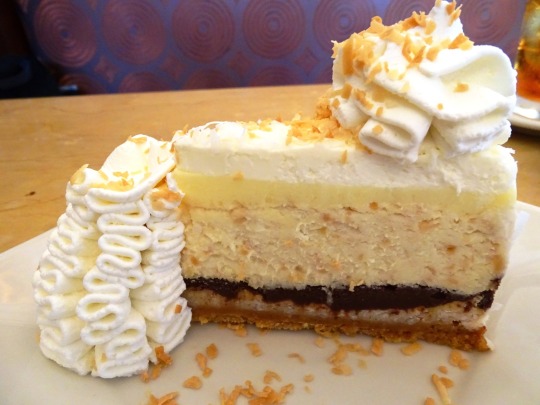
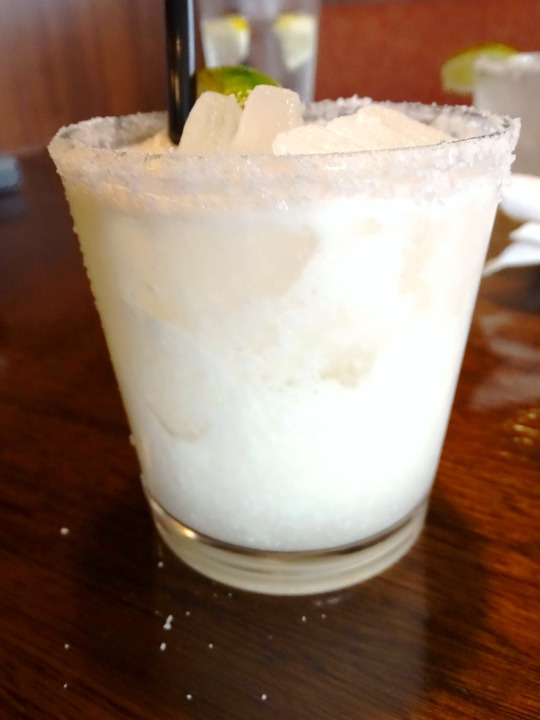
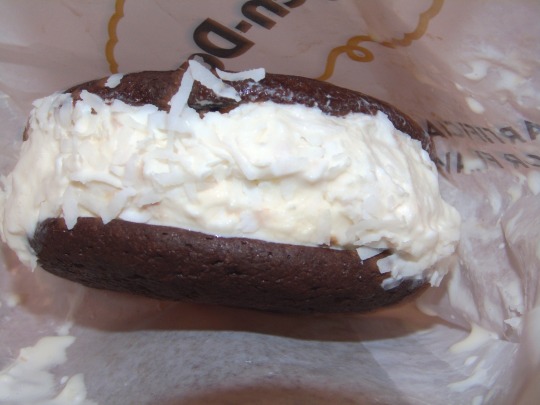

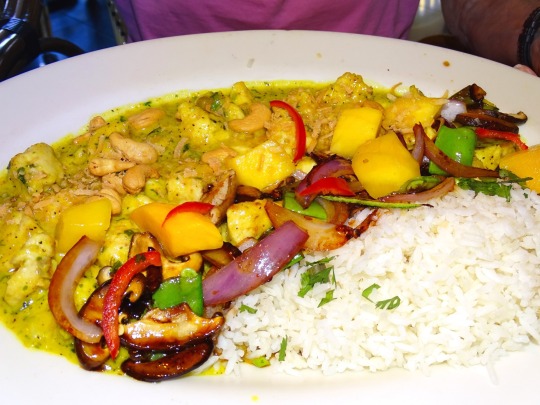



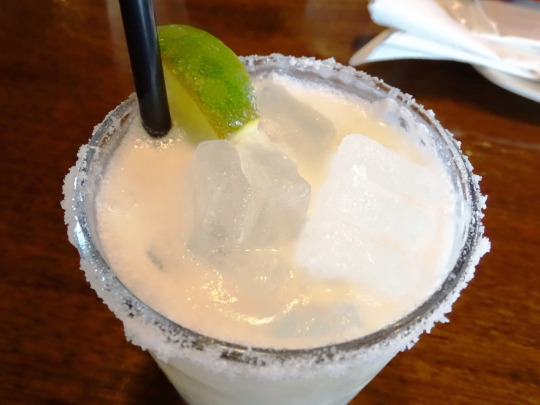
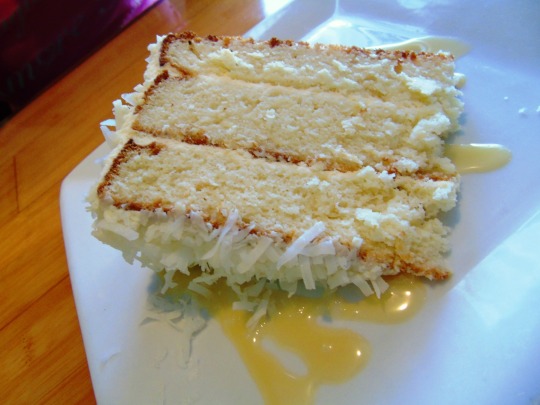

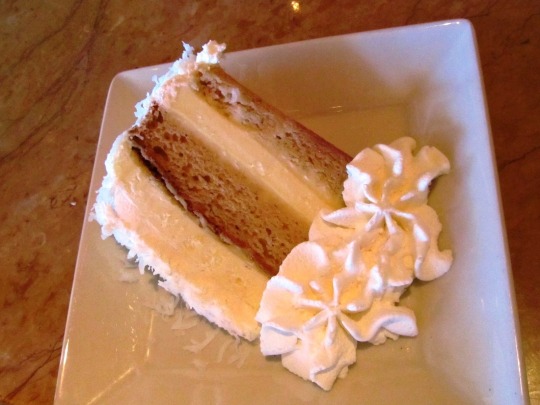
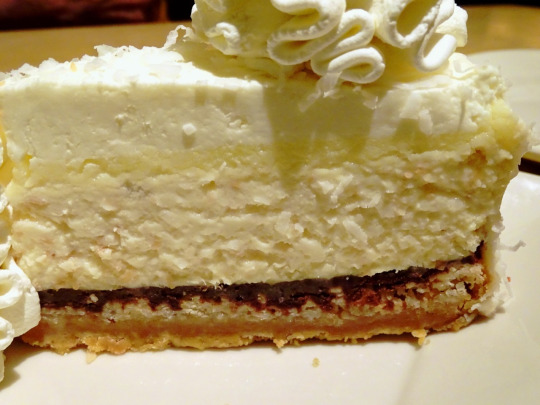
National Coconut Day
Summer starts in earnest on June 26th when National Coconut Day arrives! The coconut offers sweet support for our bodies in several ways.
Coconut oil alone falls into the superfood category due to its medium chain triglyceride (MCTs) content and all that they seem to do. Whether supporting a weight loss program, moisturizing skin, and hair or metabolizing into energy, coconut oil plays a significant role for your body.
We use the whole coconut in many different forms for our body and everyday cooking. From shredded coconut to milk, cream, water, and oil, each provides essential nutrients and flavor. Its anti-viral and anti-microbial properties are notable as well.
Coconut is rich in fiber, Vitamin B6, iron, and minerals like magnesium, manganese, phosphorus, selenium, and zinc. The oil from coconut moisturizes our skin and also help keep our skin clear and hair silky, too.
Of course, in the kitchen, we love coconut! Beyond baked goods, coconut infuses sweet flavor to our cooking, and because the MCTs in coconut oil don’t absorb in the body as fat, it is an ideal alternative to other oils and fats.
The flavor of coconut oil makes the best air-popped popcorn. Add coconut milk to your curry recipe and win rave reviews! Those who are lactose intolerant and craving ice cream know that coconut milk also makes an excellent substitute for creamy homemade ice cream. And of course, it’s not summer without a piña colada!
Beyond the fruit and water of the coconut that we consume, the husk and shells are used as a potting medium, carbon filtration, charcoal, bio-fuel, and even organic cat litter. The husks are also used to make coir, which is used in making mattresses, doormats, and more.
HOW TO OBSERVE
Enjoy the benefits of coconut and share your favorite ways to use coconut. Whether it’s a recipe to taste or one to make our skin or hair shine, we want to know. To get you started, here are a few recipes from the Coconut Coalition of the Americas and their members:
Shrimp Quinoa Risotto with Baby Kale
Spicy Black Bean Soup with Coconut Avocado “Cream”
Coconut Walnut Energy Bites
Perfect Piña colada
Other recipe sources:
Coconut Cooking Blog
Coconut Benefits
Learn about the benefits of coconut by visiting Coconut Coalition of the Americas (CCA).
HISTORY
The Coconut Coalition of the Americas (CCA) was founded in 2017 when coconut industry stakeholders realized there needed to be one unified voice for the North American coconut trade. Industry members came together to steward the category and promote the facts about coconut oil and coconut products. The Coconut Coalition of the Americas founded National Coconut Day to celebrate the mighty coconut and increase awareness of its benefits. It’s more than just a baking staple.
In 2019, the Registrar at National Day Calendar proclaimed National Coconut Day to be observed on June 26th annually.
Source
#Coconut Margarita#Coconut Cream Pie Cheesecake#Thai Coconut-Lime Chicken#Coconut Cake#Coconut Ice Cream Sandwich#Coconut Cream Pie#Roasted Coconut Donut#Chris' Outrageous Cheesecake#Piña Colada Cake Cheesecake#Banana Annies#National Coconut Day#NationalCoconutDay#26 June#dessert#street food#restaurant#USA#Canada#original photography#travel#summer vacation#vacation
3 notes
·
View notes
Text
The first center of plant domestication was in the Near East, probably in the upper reaches of the Euphrates River valley (see table 4.1). By 9000 BC wheat had been domesticated, and rye and barley were not far behind. In South America, beans (8000 BC), squash (8000 BC), quinoa (6000 BC), maize (7000 BC), and potatoes (6000 BC) were brought under human control. In China, rice was domesticated before 6000 BC, and possibly much earlier. Rice was domesticated again in South Asia (6000 BC). In Africa, sorghum was domesticated very early (arguably as early as 8000 BC), and pearl millet (2500 BC) was also a local domesticate.
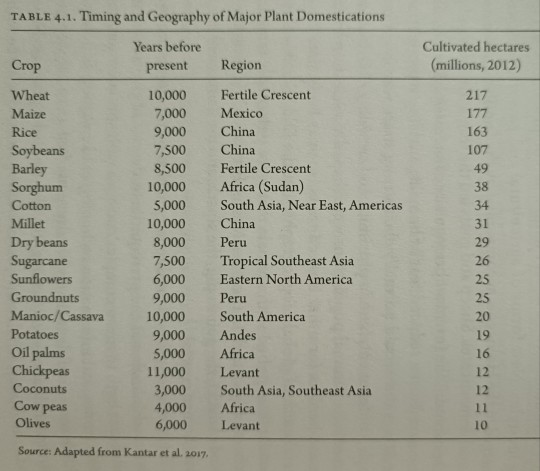
"Plagues Upon the Earth: Disease and the Course of Human History" - Kyle Harper
#book quote#plagues upon the earth#kyle harper#nonfiction#domestication#agriculture#farming#crops#timeline#passage of time#fertile crescent#mexico#china#africa#sudan#south asia#near east#americas#peru#southeast asia#asia#north america#south america#andes#levant
2 notes
·
View notes
Text

The Mediterranean diet contains nutrients that are known to enhance longevity and has other health benefits that are backed by peer-reviewed, scientific studies. Broccoli is one of nature's most nutrient-dense foods, with only 30 calories per cup and contains fibre and polyphenols — antioxidants that detoxify cell-damaging chemicals in your bodying.
A Spanish study found a Mediterranean diet supplemented with extra-virgin olive oil reduced the incidence of major cardiovascular events among patients with a history of heart disease.
Quinoa contains a good dose of protein to help build muscle. Yet including any type of whole grain in your diet — from barley to brown rice — will aid in weight loss by filling you up for fewer calories.
Blueberries is a kind of superfood because studies have shown they aid in everything from fighting cancer to lowering cholesterol. But all berries, including raspberries, strawberries and blackberries, contain antioxidants and phytonutrients.
Studies show that eating a handful of nuts several times a week can prevent heart disease and ultimately help you shed pounds since they fill you up and stop you from snacking on other things. Almonds, in particular, contain lots of monounsaturated fats and fibre.
Salmon is also a good source of lean protein. With this diet, doctors suggest eating fish at least two times a week. Salmon provides a high dose of omega-3 fatty acids, which studies show significantly lower the risk of heart disease. Omega-3 fatty acids fight back by reducing inflammation and slowing the rate of plaque buildup in blood vessels.
Black, kidney, white and garbanzo beans (also known as chickpeas) are good for fibre and protein. They fill you up and provide muscle-building material without any of the fat that meat can add to your meal.
Eating a breakfast high in protein is a good way to keep hunger at bay throughout the day. Eggs are full of choline, a nutrient that helps block fat from being absorbed in the liver. Choline may also help in preventing memory loss.
Spinach is a great source of iron, which is a key component in red blood cells that fuel our muscles with oxygen for energy. But researchers in Sweden identified another way in which these greens might keep you charged: Compounds found in spinach actually increase the efficiency of our mitochondria, the energy-producing factories inside our cells.
Walnuts are packed with tryptophan, an amino acid your body needs to create serotonin. They're digested slowly which contributes to mood stability and can help you tolerate stress.
Asparagus is one of the best sources of folate, a B vitamin that could help keep you out of a mental slump. Folate is important for the synthesis of the neurotransmitters dopamine, serotonin and norepinephrine; all of these are crucial for mood.
6 notes
·
View notes
Text
Luxury Train Travel - A New Frontier of Slow Tourism
Slow tourism is gaining popularity, promoting mindfulness, cultural immersion, and sustainability. Luxury train travel, combining elegance and leisurely exploration, perfectly embodies this trend, offering travelers a unique way to savor journeys and connect deeply with destinations.
Luxury trains combine elegance, history, cultural immersion, and leisurely exploration, making them a hallmark of slow tourism. As the new frontier of mindful travel, they offer a unique and enriching way to savor the journey and connect deeply with each destination.

A Return to the Golden Age of Travel
In the late 19th and early 20th centuries, train travel epitomized elegance and sophistication, with passengers enjoying plush compartments and fine dining as they traversed continents. This golden age of travel, focused on the journey itself, resonates with the principles of slow tourism today.

Luxury trains like the Venice Simplon-Orient-Express and Maharajas' Express capture the charm of a bygone era with vintage decor, gourmet dining, and impeccable service. These journeys focus on the richness of the experience, offering modern travelers timeless luxury over speed.
Immersive Travel Experiences Slow tourism champions cultural and environmental immersion, and luxury trains deliver this beautifully. Whether traversing the Scottish Highlands aboard the Belmond Royal Scotsman or the Australian Outback on The Ghan, these journeys allow travelers to connect deeply with the landscapes they explore.

Luxury train journeys often feature curated off-train excursions to explore remote villages, historical landmarks, and natural wonders. For example, the Palace on Wheels in India includes stops at iconic sites like the Taj Mahal and Jaipur’s Amber Fort, offering travelers an authentic connection to local culture and heritage.
Sustainability and Environmental Consciousness
Slow tourism prioritizes sustainability, and luxury trains align with this by offering eco-friendly travel with lower carbon emissions than planes or cars. Many luxury trains also adopt energy-efficient technologies and support local communities, combining responsible travel with indulgent experiences. Luxury train operators prioritize preserving the natural and cultural landscapes they traverse. For instance, Rovos Rail in Africa supports wildlife conservation efforts, allowing travelers to enjoy a lavish experience while contributing to environmental preservation for future generations.
A Celebration of Local Cuisine
Luxury train journeys turn dining into an art, with chefs creating gourmet meals from locally sourced, seasonal ingredients. This focus on authentic regional cuisine aligns with slow tourism, offering travelers a sustainable and immersive culinary experience.
On luxury trains like the Belmond Andean Explorer in Peru and The Blue Train in South Africa, dining becomes a cultural journey. Passengers savor regional dishes like quinoa, trout, Karoo lamb, and Cape Malay curry, celebrating the local culture and culinary traditions with every bite.
Mindful Relaxation and Rejuvenation
Luxury train travel offers true relaxation, a cornerstone of slow tourism. Away from the stress of airports and crowded tourist spots, passengers can unwind in plush surroundings, enjoy fine wines, or indulge in spa treatments, all while savoring a peaceful, unhurried pace.
The rhythmic motion of a luxury train, paired with stunning, ever-changing landscapes, creates a meditative experience that encourages reflection and relaxation, allowing travelers to fully appreciate the beauty of the journey.
A Journey Tailored for You
Luxury train travel offers a bespoke experience, with personalized service and meticulous attention to detail. From the moment you board, every aspect of the journey is tailored to your preferences, ensuring you’re treated like royalty throughout.
Luxury train travel offers a personalized experience for any type of traveler—whether it's a romantic getaway, family adventure, or solo retreat. Tailored to your desires, these journeys embody the slow tourism philosophy, focusing on both the experience and the destinations you explore.
Luxury train travel offers a refreshing escape from the fast-paced world, perfectly embodying the principles of slow tourism. With immersive experiences, sustainable practices, and meaningful connections, it provides a luxurious and enriching way to explore the world at a leisurely pace.
#SlowTourism #LuxuryTrainTravel #JourneyNotDestination #ConsciousTravel #TrainJourneys LuxuryJourneys TravelBeyondTheOrdinary RockyMountaineer VeniceSimplonOrientExpress PalaceOnWheels RovosRail
#tours#traveling#travels#travel agency#travel agent#tour agency#luxury tour agency#luxury travel expert#Luxury Travel Agent
2 notes
·
View notes